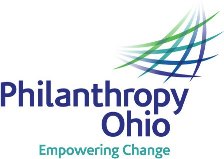Posts filed under ‘Uncategorized’
How will the new tax law impact the nonprofit sector?
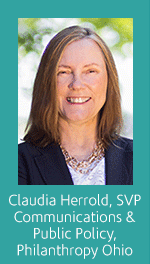 As the dust settles and we plan our work for 2018, many in the nonprofit sector – funders and grantees alike – are wondering just what the recently-passed tax reform bill will mean for them. It’s a mixed bag of impacts, both potential and certain. Here’s what we know and what we don’t know but anticipate.
As the dust settles and we plan our work for 2018, many in the nonprofit sector – funders and grantees alike – are wondering just what the recently-passed tax reform bill will mean for them. It’s a mixed bag of impacts, both potential and certain. Here’s what we know and what we don’t know but anticipate.
First, the Tax Cuts and Jobs Act did NOT repeal the Johnson Amendment. The law, in place since 1954, prohibits nonprofits from political campaigning; nonprofits can neither contribute to nor endorse candidates for any elected office. Philanthropy Ohio thinks this is a good thing and opposes its weakening and repeal. There are still bills in Congress aimed at repeal, so the sector needs to keep a close eye on those. HR 781, the Free Speech Fairness Act, has 61 co-sponsors including Ohio Representatives Jordan and Renacci and its companion bill, S 264, has 5 sponsors.
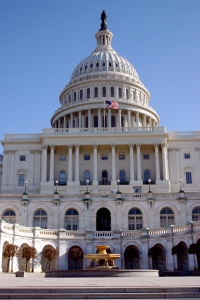
Noteworthy among other provisions of the Tax Cuts and Jobs Act is one that will assess a 21 percent excise tax on compensation at nonprofits paying staff $1 million or more. Our colleagues at Clark Schaefer Hackett have a good article that explains the details of this provision, along with the tax on college investment income.
The tax law doubles the standard deduction, which means many current itemizers – projected as high as 95% – will stop itemizing deductions and claim the standard, especially since the deduction for state and local taxes was limited. This will likely impact charitable giving but it’s uncertain at what level. Estimates of projected decreases in giving range in the billions; a study by the Lilly Family School of Philanthropy and Independent Sector pegs the range of potential impact at $4.9 to $13 billion. The Tax Policy Center’s analysis puts the number at the high end; it looked at impacts on various income levels and concluded “the new law is likely to reduce charitable giving by somewhere in the neighborhood of 5 percent. And those gifts will come from fewer—and richer—givers.”

We also know that donors at the higher end of the income spectrum are more likely to give their charitable contributions to arts and culture organizations as well as colleges and universities, while those with middle and lower incomes tend to support organizations providing safety net services – food pantries, homeless shelters and the like. Accordingly, it may be that the tax law disproportionately affects donations to human service organizations.

Here in Ohio, about one-quarter of taxpayers have historically claimed charitable contributions as itemized deductions. In 2015, the latest year for which we have IRS data, 1.1 million Ohioans claimed gifts totaling $5.85 billion, gifts that went to all kinds of nonprofits across the state, nation and world. Ninety-five percent of our state’s itemizers were responsible for over $3 billion in charitable donations; that is a big chunk of money that’s potentially at risk. While we don’t believe that tax policy creates a charitable intent, it does influence the timing, amount and form of gifts. This was clear just this past year, as described in a Chronicle of Philanthropy article that showed online donors gave 38 percent more to charity and made 18 percent more gifts during the last week of 2017 than in the final week of 2016, with 61,000 donations totaling over $14 million given on New Year’s Eve alone.
How can foundations and grantees prepare for the uncertainty posed to their fundraising? One piece of advice: without the artificial deadline of December 31 for tax purposes, resource development, annual giving campaigns and crowdfunding activities need to be planned now and implemented earlier. And, given the proclivity of millennials and others toward online giving, nonprofits need to up their game using social media and technology.

The sector also should ramp up its advocacy activity to lobby for the creation of a universal deduction for charitable gifts. We lobbied long and hard for its conclusion in the tax reform bill, without success, and will renew our efforts this spring when we visit Washington for Foundations on the Hill.
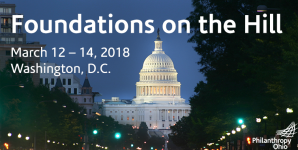
Additionally, we’ll be asking our Ohio delegation to extend and expand the IRA Charitable Rollover, which could open new sources of donations by allowing those aged 59 ½ and over to contribute assets tax-free and by including donor advised funds as eligible recipients. These provisions could offset – at least partially – the anticipated drop in charitable contributions, continuing the strong American tradition of giving by individuals to help neighbors and by foundations to invest in addressing critical community needs.
Claudia Y.W. Herrold
January 22, 2018 at 12:21 pm Philanthropy Ohio Leave a comment
10 ways to get the most from your Philanthropy Ohio membership
 Your membership in Ohio’s statewide philanthropic network presents great ways to enhance your professional development and further your career:
Your membership in Ohio’s statewide philanthropic network presents great ways to enhance your professional development and further your career:
1. Extend your learning by attending programs in person or from the comfort of your office and by reading the latest and best resources.
2. Engage in policy reform work by participating in our Education or Health Initiatives.
3. Seek advice and tips from your peers, posting to one of our funder-specific listservs.
4. Request a speaker on the latest philanthropy data and trends.
5. Submit an information request or request a sample document.
6. Volunteer for a committee.
7. Share news about your organization, for inclusion online and in newsletters.
8. Get free advice from our Lawyer on Call, an expert in foundation law.
9. Write a guest blog on a current philanthropic topic or project at your organization.
10. Connect via social media on Facebook, Twitter and YouTube.
Claudia Y.W. Herrold
January 10, 2018 at 10:12 am Philanthropy Ohio Leave a comment
Implications of tax reform bill
 As the dust settles on the tax reform bill, I wanted to point out key provisions that will likely impact community foundations and other public charity grantmakers and suggest that you consider amplifying your end-of-year appeals in the face of anticipated losses next year.
As the dust settles on the tax reform bill, I wanted to point out key provisions that will likely impact community foundations and other public charity grantmakers and suggest that you consider amplifying your end-of-year appeals in the face of anticipated losses next year.
Briefly, doubling the standard deduction and eliminating or reducing other credits and deductions is projected to result in 95% of current itemizers no longer using that schedule. In Ohio, based on 2015 data provided by 1.5 million itemizers with charitable deductions, that means $3.8 billion of total $5.5 billion given by individuals (not via bequests) is at risk.
 What does this mean for your organization and those you support? We don’t know for sure but we do know that tax policy plays a major incentive for charitable giving and are afraid of how those donations might fall. Additionally, the exemption from the federal estate tax was doubled to about $22 million for couples.
What does this mean for your organization and those you support? We don’t know for sure but we do know that tax policy plays a major incentive for charitable giving and are afraid of how those donations might fall. Additionally, the exemption from the federal estate tax was doubled to about $22 million for couples.
A few of our members have asked today about how to position their organization for planned or special appeals before the end of the year, beyond sending the message of “send more money now.”
Pointing out that this may be the last year for which most donors will have the tax incentive to give, you might suggest that they use their IRA assets (if they are 70 ½ or older) and/or that they consider making a one-time substantial gift.
 Three positive items to note: the Johnson Amendment stands, prohibiting political activity by nonprofits; no changes were made to donor advised funds; and donors can receive a tax deduction for cash gifts of up to 60% of their adjusted gross income, up from the current 50% limit.
Three positive items to note: the Johnson Amendment stands, prohibiting political activity by nonprofits; no changes were made to donor advised funds; and donors can receive a tax deduction for cash gifts of up to 60% of their adjusted gross income, up from the current 50% limit.
As we look to next year, we’ll be heading to Washington D.C. for Foundations on the Hill, where we will talk about a number of ways to mitigate the damage to charitable giving that we anticipate:
- Allow IRA assets to be given to donor advised funds;
- Decrease the IRA charitable rollover age to 59 ½; and
- Create an above the line, universal deduction for charitable gifts.
It will be a critical year, please consider joining your philanthropy colleagues from across the country on March 12 – 14 for Foundations on the Hill.
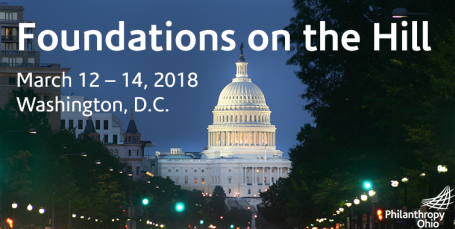
Claudia Y.W. Herrold
December 20, 2017 at 3:43 pm Philanthropy Ohio Leave a comment
New trustees join the Philanthropy Ohio board
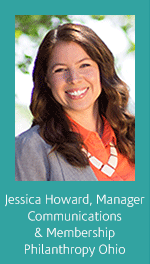 At the Philanthropy Ohio annual meeting on October 5, members elected five philanthropy leaders to serve an initial three-year term on the Board of Trustees beginning in January. We’re thrilled to welcome these new members to the board. Read their bios below.
At the Philanthropy Ohio annual meeting on October 5, members elected five philanthropy leaders to serve an initial three-year term on the Board of Trustees beginning in January. We’re thrilled to welcome these new members to the board. Read their bios below.
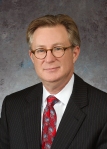 Keith Burwell has led the Toledo Community Foundation since 2004, where he oversees an annual grants program averaging $14 million. As a catalyst and convener, he brings the foundation’s voice and resources to critical community issues. Keith has served on Philanthropy Ohio’s Public Policy, Annual Conference and Community Foundation Committees. He has a master’s degree from Southwestern Baptist Theological Seminary and a bachelor’s degree from Campbell University.
Keith Burwell has led the Toledo Community Foundation since 2004, where he oversees an annual grants program averaging $14 million. As a catalyst and convener, he brings the foundation’s voice and resources to critical community issues. Keith has served on Philanthropy Ohio’s Public Policy, Annual Conference and Community Foundation Committees. He has a master’s degree from Southwestern Baptist Theological Seminary and a bachelor’s degree from Campbell University.
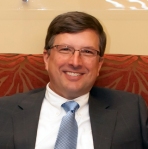 Brady Groves has served as president of the Richland County Foundation since 2011 where he has helped create a five-year economic development investment strategy, developed a nonprofit capacity-building academy and worked to change the foundation’s paradigm of responsive grantmaker to a system of social capital and impact. He co-chairs the Member Services Committee and has served on the Annual Conference Committee. Brady earned his MBA from Ashland University and a bachelor’s degree in business administration from Bowling Green State University.
Brady Groves has served as president of the Richland County Foundation since 2011 where he has helped create a five-year economic development investment strategy, developed a nonprofit capacity-building academy and worked to change the foundation’s paradigm of responsive grantmaker to a system of social capital and impact. He co-chairs the Member Services Committee and has served on the Annual Conference Committee. Brady earned his MBA from Ashland University and a bachelor’s degree in business administration from Bowling Green State University.
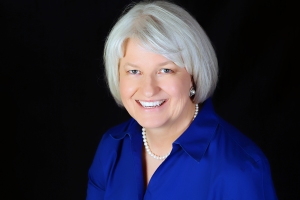 Margaret R. Hulbert serves as vice president, strategic resources & public policy, for United Way of Greater Cincinnati where she directs a team to develop effective funding partnerships for health, human services and community development needs in Southwestern Ohio and Northern Kentucky. She serves on Philanthropy Ohio’s Public Policy and Education Advisory Committees. Margaret holds a bachelor’s degree in English and political science from Macalester College and did postgraduate work in college administration at Indiana University.
Margaret R. Hulbert serves as vice president, strategic resources & public policy, for United Way of Greater Cincinnati where she directs a team to develop effective funding partnerships for health, human services and community development needs in Southwestern Ohio and Northern Kentucky. She serves on Philanthropy Ohio’s Public Policy and Education Advisory Committees. Margaret holds a bachelor’s degree in English and political science from Macalester College and did postgraduate work in college administration at Indiana University.
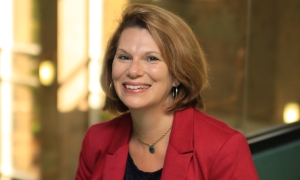 Lissy Rand serves as vice president, grantmaking & strategy, for Deaconess Foundation, which she joined in 2014 after nearly 10 years with Foundation Management Services in Cleveland where she served as program officer for five client foundations. She is a graduate of Northwestern University and received a Master of Social Work degree from University of Michigan and a Master of Public Health degree from University of Illinois.
Lissy Rand serves as vice president, grantmaking & strategy, for Deaconess Foundation, which she joined in 2014 after nearly 10 years with Foundation Management Services in Cleveland where she served as program officer for five client foundations. She is a graduate of Northwestern University and received a Master of Social Work degree from University of Michigan and a Master of Public Health degree from University of Illinois.
 Karen White is the senior vice president and senior program officer, corporate philanthropy, for KeyBank where she manages a grant portfolio of nearly $40 million. In Northeast Ohio, Karen manages strategic grantmaking for the foundation in the areas of arts and culture and community economic impact in addition to leading the bank’s national signature volunteer program and strategic grantmaking in the Great Lakes and Western Pennsylvania regions. She is a graduate of Sawyer College of Business.
Karen White is the senior vice president and senior program officer, corporate philanthropy, for KeyBank where she manages a grant portfolio of nearly $40 million. In Northeast Ohio, Karen manages strategic grantmaking for the foundation in the areas of arts and culture and community economic impact in addition to leading the bank’s national signature volunteer program and strategic grantmaking in the Great Lakes and Western Pennsylvania regions. She is a graduate of Sawyer College of Business.
Also at the annual meeting, we recognized two outstanding volunteers who are leaving the board this year.
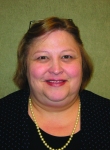 Mary Sobecki, executive director of the Needmor Fund, joined the board in 2008. Bringing her wit and wisdom to the boardroom, Mary over the past 9 years served on many committees, including: annual conference, strategic planning, public policy, diversity, equity and inclusion and numerous affinity groups.
Mary Sobecki, executive director of the Needmor Fund, joined the board in 2008. Bringing her wit and wisdom to the boardroom, Mary over the past 9 years served on many committees, including: annual conference, strategic planning, public policy, diversity, equity and inclusion and numerous affinity groups.
 Melissa Kleptz, executive director of the Troy Foundation, has served faithfully on the board since 2009. Melissa has brought her energy and expertise to a variety of areas, with service on governance, executive, public policy, Ohio Philanthropy Award Selection, community foundations and strategic planning committees, and she chaired the board of trustees for two years. She undoubtedly has left her mark on our organization with her steadfast leadership, integrity and insight.
Melissa Kleptz, executive director of the Troy Foundation, has served faithfully on the board since 2009. Melissa has brought her energy and expertise to a variety of areas, with service on governance, executive, public policy, Ohio Philanthropy Award Selection, community foundations and strategic planning committees, and she chaired the board of trustees for two years. She undoubtedly has left her mark on our organization with her steadfast leadership, integrity and insight.
We’re looking forward to 2018 and a new year of leadership, learning, growth and progress.

Jessica Howard
December 18, 2017 at 5:00 pm Philanthropy Ohio Leave a comment
Open letter to Ohio’s Congressional delegation
The Honorable Joyce Beatty
U.S. House of Representatives
Washington, DC
Dear Representative Beatty,
As we watch the U.S. Congress move with all due haste toward passing a tax reform bill, Philanthropy Ohio urges you to carefully evaluate proposed reforms’ impact on philanthropy and on the lives of our most vulnerable citizens, those whom our philanthropic dollars serve through our nonprofit partners.
The pending tax debate is critical for the philanthropic sector, as we have witnessed during conversations with Trump Administration officials and congressional staff. Those conversations revealed the widely-held, misguided understanding that Congress can enact severe tax cuts because philanthropy can step in to meet the resulting needs of the underserved. We in philanthropy know this is a fallacy of supreme proportions and we continue to push back on that statement.
For the first time, Philanthropy Ohio is weighing in on tax policies beyond the typical items related to charitable giving; as you well know, we have visited with you and others to advocate for expanding the IRA Charitable Rollover; reducing the private foundation excise tax; and maintaining the full scope and value of the charitable deduction. Those are all important for philanthropy’s continued strength and vitality – but this time we turn our attention as well to a number of other items that help those served by philanthropy, lower- and middle-income individuals and families.

You are familiar with Ohio’s current economic circumstances, where townships and small- to mid-sized legacy cities are experiencing unprecedented financial insecurity. The Ohio United Way’s ALICE® Report (Asset Limited, Income Constrained, Employed) found that in 2015, 14% of Ohio’s households faced financial hardship and an additional 26% (1.2 million households) were identified in the ALICE category. It is this population of Ohioans about whom we are most concerned when we read the tax reform proposals, concluding that they could very well do more harm than good on the lives of those we in the philanthropic sector have the privilege to serve.
Consider, for instance, two tax credits for low- and middle-income workers under debate: the Earned Income Tax Credit (EITC) and the Child Tax Credit (CTC), both of which help individuals and families make ends meet by keeping more of what they earn. The EITC refundable tax credit incentivizes work and depends on a worker’s income, marital status and number of children. In Ohio, 939,000 workers claimed the EITC last year, putting $2.3 billion into Ohio and lifting people out of poverty. The EITC’s power could be increased by extending it to younger adults, parents not living with their children and veterans. Similarly, the CTC should be protected as a refundable credit and considered for expansion to older adults, especially given the number of seniors raising grandchildren as a result of the opiate addiction crisis.
For a working family in Elyria, Ohio, that earns $12 an hour in a local manufacturing plant, living paycheck to paycheck requires vigilance and planning that few of us with privilege understand. Life for many families is wrought with uncertainty, and a tax refund check can mean the difference between eviction or being able to pay for medicine. Both Republicans and Democrats have supported the EITC and current proposals to change these effective policies would push more people in lower- to middle-income brackets into full-blown poverty that will increase demands on philanthropy and nonprofits.

Another set of credits at risk in current debates is also of concern to those of us who look at education as a step out of poverty: the American Opportunity Tax Credit (AOTC) and the Lifetime Learning Credit (LTC), designed to help low and middle class taxpayers afford higher education expenses. The AOTC is the more lucrative of the two as it can provide a family with about $2,500 a year for each eligible student. Foundations know that for many families a $5,000 top-off to a financial aid package can mean a world of difference for a student embarking on a four-year college education or community college. The LTC provides up to $2,000 for qualifying tuition and fees for those who may be older and returning to school to pursue a new career at higher pay. We know from our colleagues in the education sector, the lifetime earnings of a person holding a four-year degree is about $1.9 million, about twice what the typical high school graduate earns, and $335,000 more than what the typical associate degree program graduate earns. Despite this evidence, a 2014 Congressional Budget Office report suggested elimination of these and similar credits to help reduce the deficit. Philanthropic dollars will never be able to make up the difference this reduction would have on this important form of college financial aid.
We are also concerned about the proposal to double the standard deduction, intended to simplify the tax code by reducing the number of itemizers by 95%. In Ohio, that would mean 1.25 million fewer itemized returns reporting charitable contributions in a given year. Of the 1.31 million Ohioans who itemized charitable contributions on their federal returns, 24 percent had incomes less than $50,000 and made $612 million in contributions to local charities. Further, middle-income taxpayers (income between $50,000 and $200,000) gave $2.6 billion dollars and made up two-thirds of all itemizers. The remaining 7 percent – the wealthy donors with income over $200,000 – presumably would be the only ones left itemizing. Research suggests that overall charitable giving in the U.S. would drop dramatically if this provisions passes. The nonprofit sector, which in Ohio constitutes 10% of the work force, would be significantly impacted by reduced charitable contributions and services would be dramatically cut – all leading to increased demands on philanthropic dollars. And, some models have shown that doubling the deduction would actually increase the tax burden on low to middle-income taxpayers, when all itemized deductions are foregone. What looks like an admirable simplification could result in a larger tax burden for many.
Here In Ohio, philanthropy leaders realize that as co-investors with government on a wide array of critical issue areas – including education, health, human services and economic development – the federal tax code is a tool that allows this partnership to flourish and that supports the common good of a vibrant and informed democracy filled with opportunity for all to achieve the American dream. We hope that reform discussions occur within a framework that considers how the tax code can: promote and sustain a robust tradition of generous charitable giving by Americans helping their neighbors; ensure the vibrancy of the nonprofit sector, where its citizens voluntarily engage in their democracy; advance economic security for all Americans; and invest in educational opportunities that prepare Americans for the dramatic changes facing us in this 21st century.
We urge you to use these goals as you consider the tax reform proposals being debated and we stand ready to provide additional information and insights as would be helpful.
Sincerely,
Suzanne T. Allen, Ph.D. Claudia Y.W. Herrold
President & CEO Senior Vice President
October 30, 2017 at 4:59 pm Philanthropy Ohio Leave a comment
Four philanthropists honored in Cleveland
 Earlier this month, four individuals received awards for outstanding achievements in philanthropy. This year is the 13th consecutive year our board of trustees has awarded the Ohio Philanthropy Award, which went to Hank Doll. Read more about the four awards and awardees below.
Earlier this month, four individuals received awards for outstanding achievements in philanthropy. This year is the 13th consecutive year our board of trustees has awarded the Ohio Philanthropy Award, which went to Hank Doll. Read more about the four awards and awardees below.
Innovation Award – Don Ambrose
The Innovation Award honors a philanthropic catalyst – someone who has moved philanthropy forward from an original idea through implementation to results, and the 2017 winner is Don Ambrose.
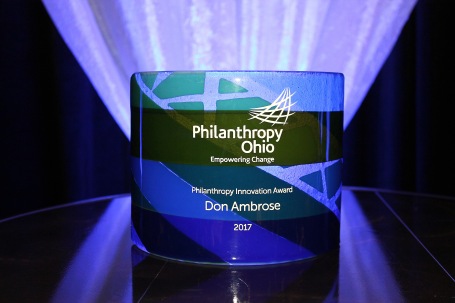 Del Mar Healthcare Inc.’s President Don Ambrose established the Del Mar Social Innovation Award at the Dayton Foundation with the goal of challenging local organizations to think deeply and creatively about how they can serve older adults. Since 2010, the Social Innovation Award has granted more than $2 million to enhance the lives of Greater Dayton’s older adults. The award funds proposals that demonstrate groundbreaking, unique and highly collaborative projects. Without the encouragement of the Del Mar Social Innovation Award, some of these important community projects may have not come to fruition.
Del Mar Healthcare Inc.’s President Don Ambrose established the Del Mar Social Innovation Award at the Dayton Foundation with the goal of challenging local organizations to think deeply and creatively about how they can serve older adults. Since 2010, the Social Innovation Award has granted more than $2 million to enhance the lives of Greater Dayton’s older adults. The award funds proposals that demonstrate groundbreaking, unique and highly collaborative projects. Without the encouragement of the Del Mar Social Innovation Award, some of these important community projects may have not come to fruition.
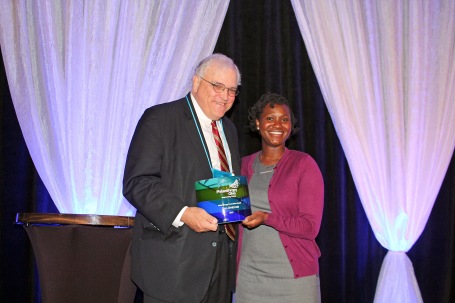
Aiyana Marcus, program officer at The Dayton Foundation, accepted the Innovation Award on Don’s behalf and is pictured with Robert Jaquay, The George Gund Foundation associate director.
Emerging Ohio Philanthropist – Anthony Richardson
The award for an Emerging Ohio Philanthropist honors someone who, regardless of age, has engaged in philanthropy for the first time in the last few years, either as a volunteer or as staff. Nominees should demonstrate exemplary leadership in advancing philanthropy, engagement beyond a single community, creativity in a philanthropic endeavor or project and significant accomplishment over a short period.
The 2017 winner is Anthony Richardson, described by his nominators as someone “who has exemplified the spirit of quiet leadership and innovative approaches to problem solving.” Another nominator noted that he has “emerged as a strong voice and active member of Philanthropy Ohio’s DEI Committee.”
Anthony currently serves as the Civic Affairs and Education Program Officer for The Nord Family Foundation. He is involved with Philanthropy Ohio’s DEI Committee, Education Advisory Committee, Public Policy Committee and the Tax Reform Working Group. He recently was named chair of the Academic Distress Commission for Lorain City Schools, appointed by State Superintendent of Schools Paolo DiMaria.
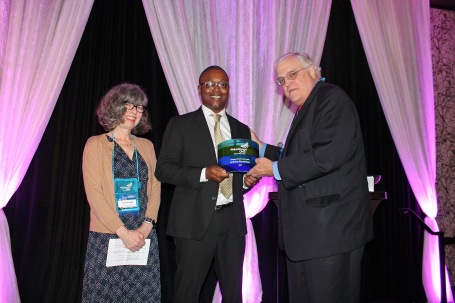
The 2017 Emerging Philanthropist is Tony Richardson (center) pictured with Connie Hawk (left), Licking County Foundation director and Robert Jaquay (right), George Gund Foundation associate director.
Michael G. Shinn Award for Diversity, Equity and Inclusion in Philanthropy – Treye Johnson
The Philanthropy Ohio Board of Trustees created this award after Mike’s death in March 2015. He was the founder of the Shinn Family Foundation and served as secretary of Philanthropy Ohio’s Board of Trustees; he also chaired the board’s Diversity, Equity and Inclusion (DEI) Committee, taking on primary responsibility for guiding Philanthropy Ohio’s efforts in that arena. In addition to the philanthropy he did through the Shinn Family Foundation, Mike was an active and respected community volunteer who gave generously of his time, talent and treasure.
Award nominees should have made outstanding contributions to philanthropy by demonstrating that he or she builds bridges, connecting people dedicated to diversity, equity and inclusion; champions the acceptance, respect and inclusion of all; promotes justice and fairness; forges genuine partnerships with diverse communities; and implements DEI practices in organizational operations, grantmaking and other areas.
Treye Johnson, program officer at The Burton D. Morgan Foundation, is the 2017 winner. He helped bring the Racial Equity Institute’s Groundwater training to Northeast Ohio over the past two years and is planning future activities that follow up on the training. He also coordinated the 2016 Forward Cities national convening that focused on initiatives advancing inclusive entrepreneurship and innovation. Treye has also been a driving force on our Diversity, Equity and Inclusion Committee, bringing his passion and voice to this important work.
One of his nominators described Trey’s impact, saying, “Treye has emerged as a strong voice and active member of Philanthropy Ohio’s Diversity, Equity and Inclusion committee. As I learn of all the things he’s involved with, I continue to be impressed. It’s people like Treye who give me hope for the future. He is passionate, articulate and involved in both his community and philanthropy.”
Deborah Hoover, president and CEO of Burton D. Morgan Foundation, noted, “Treye has served as an inspirational role model in helping to create a ‘culture of inclusion’ in our Northeast Ohio entrepreneurial ecosystem. Trustees and staff are extremely proud of this meaningful recognition of Treye.”
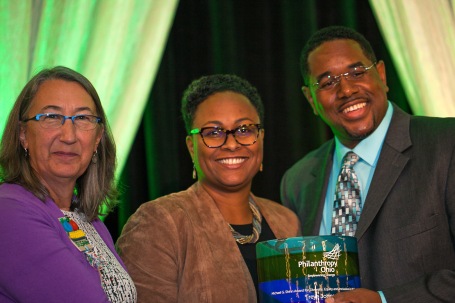
Treye Johnson (right) won the 2017 Michael G. Shinn Award for Diversity, Equity and Inclusion in Philanthropy. He’s pictured with Athens County Foundation Executive Director Susan Urano (left) and Deborah Aubert Thomas, Philanthropy Ohio vice president for programs and learning.
Ohio Philanthropy Award – Hank Doll
The Ohio Philanthropy Award is the award for lifetime achievement. It recognizes an individual or organization for outstanding achievements over a long period, demonstrating long-standing leadership in advancing philanthropy, creativity in responding to societal problems and significant positive impact on philanthropy.
This year’s award winner is Hank Doll of the Doll Family Foundation. Many thoughtful letters extolling Hanks’ accomplishments and passion for philanthropy spoke of his generosity of spirit, his longstanding leadership and his integrity. Hank’s contributions to philanthropy span five decades and have influenced foundations, nonprofit organizations and communities across Ohio. He has worked as an executive, an individual philanthropist, civic leader and advisor. His creation of the “Giving Back Gang” not only inspired giving, but also engaged more than 70 individual philanthropists, generating $275,000 in grants over 15 years. Philanthropy in Ohio would not be the same without Hank.
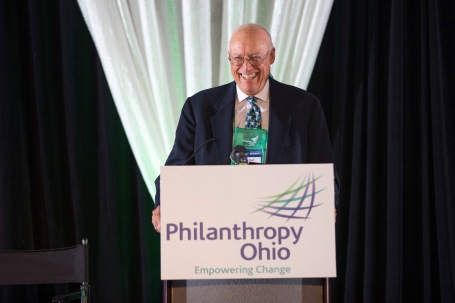
Hank Doll of the Doll Family Foundation won the 2017 Ohio Philanthropy Award.
Congratulations to our 2017 Philanthropy Award winners!

Jessica Howard
October 23, 2017 at 4:29 pm Philanthropy Ohio Leave a comment
The importance of public space
 This week we welcome Nelson Beckford, Senior Program Officer for Strong Communities at Saint Luke’s Foundation, as guest blogger.
This week we welcome Nelson Beckford, Senior Program Officer for Strong Communities at Saint Luke’s Foundation, as guest blogger.
By definition, a public space is a social space that is open and accessible to people. Streets, public squares, plazas, parks and beaches are examples of public spaces. These spaces are a social utility or public good because they:
- Promote democracy, inclusion and social cohesion allowing people from various socio-economic backgrounds to share common ground to celebrate, recreate, to remember, to reflect or protest.
- Define a city or neighborhood, think Golden Gate Park, Public Square, Washington Square Park – the spaces are reflections of the values, culture and history of a place. Ditto with the simple neighborhood park.
- Promote active living; when people live close to a park or trail, they walk more.
 These are just a few of reasons that drove the Saint Luke’s Foundation along with Philanthropy Ohio to form the Public Space Community of Practice. The members represent the full spectrum of public space work from funding, research, land disposition, land acquisition, planning, design and programming. The goal of the group is broad but simple: to reflect and learn from the multiple efforts happening in Cleveland around public spaces.
These are just a few of reasons that drove the Saint Luke’s Foundation along with Philanthropy Ohio to form the Public Space Community of Practice. The members represent the full spectrum of public space work from funding, research, land disposition, land acquisition, planning, design and programming. The goal of the group is broad but simple: to reflect and learn from the multiple efforts happening in Cleveland around public spaces.
 We opened our first gathering with this check in question: “Public Spaces are important because____.” From there we did some context setting, framing and highlighted public space efforts happening at various scales and across sectors, from a memorial pocket in honor of a police officer – Derrick Owens – killed in the line of duty, to a large-scale intergenerational playscape. We also gave a sneak preview of the landmark research effort – National Park Study – conducted by City Parks Alliance, the National Institute for Health and the RAND Corporation.
We opened our first gathering with this check in question: “Public Spaces are important because____.” From there we did some context setting, framing and highlighted public space efforts happening at various scales and across sectors, from a memorial pocket in honor of a police officer – Derrick Owens – killed in the line of duty, to a large-scale intergenerational playscape. We also gave a sneak preview of the landmark research effort – National Park Study – conducted by City Parks Alliance, the National Institute for Health and the RAND Corporation.
Stay tuned for more information and/or opt in for one of the few remaining seats available on the Philanthropy Forward ‘17 “Why Parks Matter” learning tour where we will explore parks and public spaces that work and those that could better serve their nearby residents. If you haven’t registered, click here to sign up.
I challenge foundation staff and board to reflect on how our work (regardless of type of funding priorities/focus) touches on or is influenced by public spaces. As a member of society, take a moment to think about the value you, your family or neighbors get from the public spaces. Discuss.
Nelson Beckford

Register for the Philanthropy Forward ’17 conference at http://www.philanthropyforward.org.
September 11, 2017 at 2:52 pm Philanthropy Ohio Leave a comment
Welcome Emily to Philanthropy Ohio
 We are pleased to introduce Emily Gneiser to the Philanthropy Ohio team! Emily will serve as the executive assistant to President & CEO Suzanne Allen and Executive Vice President for Communications and Public Policy Claudia Herrold, as well as manage calls and meetings in the Columbus office.
We are pleased to introduce Emily Gneiser to the Philanthropy Ohio team! Emily will serve as the executive assistant to President & CEO Suzanne Allen and Executive Vice President for Communications and Public Policy Claudia Herrold, as well as manage calls and meetings in the Columbus office.
She’ll be posting questions to the listservs on behalf of members, supporting board and committee work, helping with registration for Health Initiative meetings and ensuring the Columbus office runs efficiently and effectively. Emily comes to Philanthropy Ohio with a background that includes nonprofit work and event planning.

Emily Gneiser joins Philanthropy Ohio as the executive assistant.
I asked Emily to tell us a bit more about her.
What’s the best part of your job?
Being connected to change agents in Ohio!
Career background/education?
I studied organizational communications at university. Since graduating, I’ve worked at a nonprofit in Washington, D.C., a family forum in Wisconsin, a resort in Vermont and an event company in Columbus.
What do you love about where you live?
I love all the coffee shops, breweries and great places to eat in Columbus.
Favorite brand or flavor of ice cream?
Ben & Jerry’s strawberry cheesecake ice cream
What do you do outside of work?
In my free time, I like to hang with my sister and her family, hunt for the best donut and volunteer with Rock City Church.
Welcome Emily!

Jessica Howard
U.S. House vote ends Medicaid Expansion
 I’m disappointed in last week’s U.S. House vote repealing the Affordable Care Act (ACA), ending the Medicaid Expansion that we have supported since Governor Kasich first introduced it. Over 700,000 Ohioans have health insurance because of the expansion, insurance that is critical to getting care – whether it’s care that addresses pre-existing and chronic conditions or wellness and prevention – that improves their health, keeps them in school or lets them get and keep jobs. Ohio philanthropies – private and community foundations, United Ways, health conversion foundations and more – are strong co-investors in improving the health of Ohioans, and, because of Medicaid Expansion’s coverage of so many who were previously uninsured, have been able to redirect their resources to intractable problems like infant mortality and opiate addiction crises in the state. Philanthropy can’t possibly fill the gap that will be left by the bill’s elimination of the expansion group and the restructuring and decreased funding for Medicaid.
I’m disappointed in last week’s U.S. House vote repealing the Affordable Care Act (ACA), ending the Medicaid Expansion that we have supported since Governor Kasich first introduced it. Over 700,000 Ohioans have health insurance because of the expansion, insurance that is critical to getting care – whether it’s care that addresses pre-existing and chronic conditions or wellness and prevention – that improves their health, keeps them in school or lets them get and keep jobs. Ohio philanthropies – private and community foundations, United Ways, health conversion foundations and more – are strong co-investors in improving the health of Ohioans, and, because of Medicaid Expansion’s coverage of so many who were previously uninsured, have been able to redirect their resources to intractable problems like infant mortality and opiate addiction crises in the state. Philanthropy can’t possibly fill the gap that will be left by the bill’s elimination of the expansion group and the restructuring and decreased funding for Medicaid.
 I’m glad that Reps. Joyce and Turner stood firm in their objection to the American Health Care Act and disheartened that so many of their colleagues chose to support the bill: Reps. Chabot, Davidson, Gibbs, Johnson, Jordan, Latta, Renacci, Stivers, Tiberi and Wenstrup. About half – 323,000 – of the Medicaid Expansion population lives in the districts of those who supported the repeal.
I’m glad that Reps. Joyce and Turner stood firm in their objection to the American Health Care Act and disheartened that so many of their colleagues chose to support the bill: Reps. Chabot, Davidson, Gibbs, Johnson, Jordan, Latta, Renacci, Stivers, Tiberi and Wenstrup. About half – 323,000 – of the Medicaid Expansion population lives in the districts of those who supported the repeal.
The bill now moves on to the Senate and faces two distinct barriers. First, the Senate parliamentarian must determine that the various provisions are appropriately in a budget bill. Second, as I’ve been hearing for months, the Senate (including our own Senator Portman) has its own ideas about repealing and replacing the ACA and will likely introduce its own version. Once any bill moves through the Senate, congress will need to iron out the differences.

Our advocacy efforts will continue in coming months with members of Ohio’s delegation, educating them about the negative consequences of the AHCA bill as passed and urging them to keep Medicaid Expansion and the current structure and funding of the Medicaid program in place.
Claudia Y.W. Herrold
Philanthropy Ohio and members speak out in Washington
 In mid-March, I headed to Washington, D.C. for my 18th time leading a delegation of Ohio’s philanthropy leaders at Foundations on the Hill (FOTH). Sponsored by the Forum of Regional Associations of Grantmakers (on whose board I serve, co-chairing the Government Relations Committee), the annual FOTH event engaged 300 people from 28 states in meaningful conversations with elected officials and their staff. Ohio was well represented, with 16 of us from across the state making the trip to D.C.
In mid-March, I headed to Washington, D.C. for my 18th time leading a delegation of Ohio’s philanthropy leaders at Foundations on the Hill (FOTH). Sponsored by the Forum of Regional Associations of Grantmakers (on whose board I serve, co-chairing the Government Relations Committee), the annual FOTH event engaged 300 people from 28 states in meaningful conversations with elected officials and their staff. Ohio was well represented, with 16 of us from across the state making the trip to D.C.
Wearing comfortable walking shoes for traipsing the marble halls of the House and Senate office buildings, with one-pagers and packets in hand, we started our day with an 8:30 a.m. coffee with Senator Portman and ended it talking with Rep. Tiberi’s chief of staff, having met with eight other offices during the intervening hours.

Ohio philanthropy leaders met with Senator Portman during Foundations on the Hill 2017.
Among the thousands of visitors to congressional offices that day, philanthropy’s voice was strong and collective; although every state’s delegation focused on its own particular issues, many of us delivered two key messages:
- Don’t repeal the Johnson Amendment; and
- Preserve and protect the full scope and value of the charitable deduction.
The Johnson Amendment, adopted over 60 years ago, prohibits tax-exempt organizations from political campaigning. While nonprofits can lobby (within limits) on policy topics, they cannot support or endorse political candidates. We at Philanthropy Ohio, along with more than 2,300 other organizations, think that’s a good thing (and a recent poll shows that most Americans agree with us.) But President Trump promised at the National Prayer Breakfast to get rid of the prohibition and several members of Congress agree: HR 172 would repeal the provision, while S 264 and HR 781 would substantially weaken it (it has 53 co-sponsors including Reps. Jordan and Renacci). We’ll be reaching out to Ohio’s congressional delegation in coming weeks to urge them to vote against weakening or repealing this amendment that keeps nonprofits above the political fray and charitable dollars directed to addressing critical local needs and not filling campaign coffers.

Cory Schmidt (far left), Claudia Herrold (center) and Garth Weithman (far right) met with Rep. Stivers (center) during Foundations on the Hill 2017.
We also asked our elected policymakers to preserve the charitable deduction, which allows taxpayers to deduct their charitable donations from their federal tax liability. About one-quarter of Ohioans do so, and collectively they gave over $6 billion to charities in one year alone. Current suggestions to double the standard deduction and eliminate the deduction for all but the top 5% of donors would, we believe, have a significant negative impact on giving.
Philanthropy is a strong, effective co-investor in communities and it was clear during our visits last month that our senators and representatives value the sector. But again and again, as we see the intent to pull back government funding from safety net services, we must make it clear that philanthropy cannot fill the resulting gap: there simply aren’t enough charitable dollars to replace public funding in education, health care, human services, the environment and so many other areas. We’ll be meeting with our delegation in their district offices in coming months to discuss these and other issues and I invite you to join us or to reach out individually to those who represent you in the 115th Congress.
Claudia Y.W. Herrold










